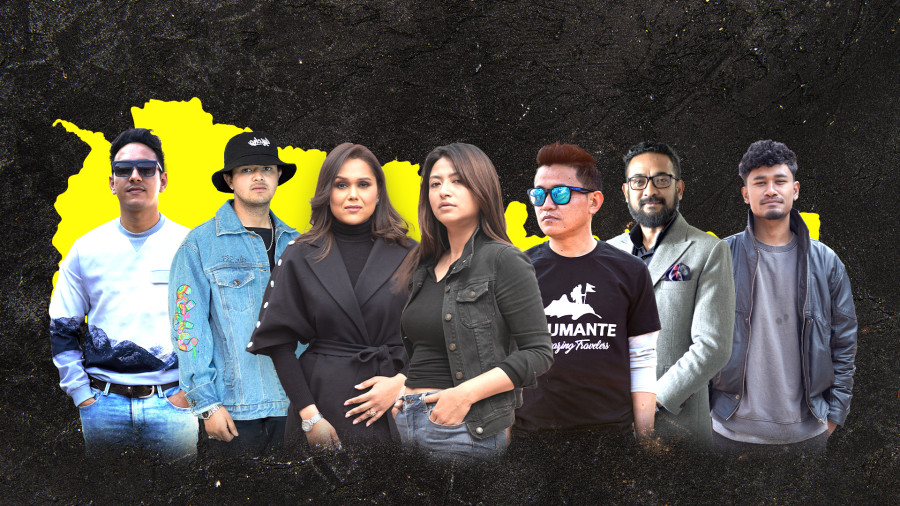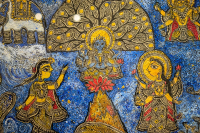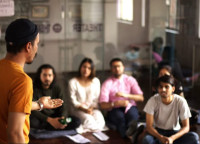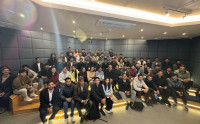Culture & Lifestyle
Promoting Nepal, one documentary at a time
The latest iteration of Imagine Nepal is an ambitious project that covers the entirety of Nepal in a total of 49 travel documentaries.
Shranup Tandukar
“Is our country only Sagarmatha, Buddha, and other popular names and things? Is Nepal only what has been seen so far? Obviously not. There are still countless unexplored places and unexplored experiences,” asserts the narrator in the first episode of Imagine Nepal.
While the Covid-19 pandemic ravaged Nepal’s tourism industry for the past two years, shutting down countless businesses and depriving people of their livelihood, it also paved the way for the growth and recognition of the importance of domestic tourism. Popular trekking routes that were once known for being popular among foreign tourists started seeing a growing number of domestic tourists, forcing the tourism industry to rethink its clientele.
In the backdrop of a rapidly growing domestic tourism industry, Imagine Nepal, a show aiming to promote unexplored places along with unexplored experiences of Nepal, was officially kicked off in May. The show's first episode aired on Kantipur TV on May 5 and on YouTube on May 6. The episodes of the show are aired on Kantipur TV on Thursdays and Fridays at 9 pm and uploaded to the official channel on YouTube on Fridays and Saturdays.
Produced by Kantipur Studios and Uptrendly, Imagine Nepal is a competition-format show which pits documentaries of seven teams against each other. Each team consists of a popular influencer as a director who is supported by a group of four to nine team members. The eventual winner of the show will be crowned with the title ‘Imagine Nepal Tourism Ambassador’ and will be awarded a purse of Rs two million to produce seven documentaries about Nepal.
The number seven is a common recurrence in the show and its structure. Each team was sent to one specific province of Nepal and tasked with creating seven documentaries on seven themes—People and Culture, Biodiversity, Food and Culinary Arts, Tourism Activities, Landscape and Terrain, The Unexplored, and Province Profile.
The seven teams and their respective provinces are Team Sahana (Province 1), Team Ghumante (Madhesh Province), Team Mannsi (Bagmati Province), Team Darshan (Gandaki Province), Team Kishor (Lumbini Province), Team Abin (Karnali Province), and Team nepal.food (Sudurpashchim Province). They are headed by Sahana Bajracharya, Kanchan Rai (popularly known as Ghumante), Mannsi Agrawal, Darshan Pokhrel, Kishor Kayastha, Abin Bho, and Siddharth Ghimire (popularly known as nepal.food) respectively.
“We chose the different team leaders based on their expertise and niche,” says Monayac Karki, co-founder and CEO of Uptrendly, a digital marketing platform that connects brands with influencers. “We wanted diversity in the teams so that the documentaries would be produced from different perspectives.”
Their vision stayed true as each team has produced documentaries in their own unique perspective for the different themes. In the different documentaries, the different team leaders' expertise, whether in cinematography, storytelling, narration, or characters, sets them apart from each other.
However, the premise of using influencers who have significant social media clout and their own niche to promote far-flung and underappreciated regions, cultures, and traditions in Nepal isn’t a recent venture for Uptrendly.
Since 2016, they have been organising expeditions to relatively unknown places in Nepal, such as Lo Manthang, Markhu, and Sandakpur, and also promote unexplored experiences in such places. The team would organise all the logistical and travel itinerary details of the trips and take influential corporate personalities to these regions to promote tourism.
But with the popularity of social media gaining a foothold in Nepal, the definition of influencers started to change, and the Uptrendly team saw an opportunity to connect influencers and tourism promotion.
“Influencers or content creators have such a big role in promoting local places, cuisines, people, and culture that it was natural for us to work with them to promote Nepal,” says Prakash Karna, director at Uptrendly. “They need to be recognised more for their efforts and power to promote all types of tourism to specific places or businesses.”
The show's format is another alluring aspect, apart from the charm of the stunning documentaries. The show also has the involvement of two veteran Nepali media personalities: Suraj Singh Thakuri hosts the episodes of the show, while Bhusan Dahal acts as the sole judge for the show. While Dahal’s scores carry the majority of the weight for the show (70 percent), the scoring system also incorporates public voting, which amounts to the remaining 30 percent of the final scores.
“The documentaries are the show's main draw but presenting them in a competition format further increases the entertainment factor,” says Karna. “A sense of competition also arises between provinces and their audiences, increasing audience engagement. Coupled with the power of influencers and their fantastic documentaries, we hope to show unexplored regions of Nepal to the general audience.”
While influencers can certainly showcase obscure and unique places and their culture to a wide audience, they may not have broad knowledge about the places and cultures, especially if they aren’t from those places. So who better to share the hidden gems of a place or a community than the community members and stakeholders?
The seven teams were aided in their goal to flaunt the unexplored places, cultures, and experiences of the seven provinces by Community Homestay Network(CHN), an organisation that connects travellers with community homestays all over Nepal. As one of the travel partners to the Imagine Nepal show, CHN coordinated with all seven teams and planned their travel logistics and itineraries.
“The initiative by Kantipur and Uptrendly to connect influencers’ reach with promoting tourism in Nepal was definitely inspiring, and we were delighted to be a part of it,” says Aayusha Prasain, CEO of CHN.
Along with helping the teams to plan their itineraries, CHN also provided one or two tour guides to the teams to help them in their documentary productions.
“There are certain places in Nepal that are well-marketed and frequented by both domestic and international tourists. A lot of activity occurs in such areas, which propel economic growth for the natives,” adds Prasain. “However, just on the outer edges of such areas are hidden cultures and activities, and they do not get the spotlight, which is a shame for both the natives and the tourists. Capturing these unexplored places in documentaries is a great way to change this narrative.”
Another travel partner to the show, Yeti Airlines, also was eager to get involved with the Imagine Nepal show after noticing the potential for domestic tourism in recent times after the ease of the Covid-19 pandemic.
The production phase of the documentaries started in March, and the seven teams completed the shooting within 25 days. Their flights and equipment logistics were all covered by Yeti Airlines.
“As a stakeholder in the domestic tourism industry in Nepal, we were intrigued and excited about the show. While the final part of the show is planned to target the international audience, I believe the show's strength is its ability to show raw, authentic glimpses of the places and culture of Nepal to domestic tourists,” says Yuvraj Kumar Bista, the chief business officer of Yeti Airlines.
Till date, the show has reached the fifth theme, Landscape and Terrain, out of the seven themes. While the viewership numbers for the show have decreased since the initial episodes, Karna believes that the general audience will gradually appreciate the efforts of the teams and the show organisers to promote tourism in Nepal.
He adds that this season of Imagine Nepal was also a learning opportunity for the organisers.
“When we first envisioned our idea to promote tourism in Nepal by connecting notable influencers and renowned media personalities like Bhusan Dahal, no one believed we could do it,” says Karna. “Organising this show from the initial phase to the competition phase was only possible because of the dedication of our team. With all the things we have learnt and are learning from the first season, we will hopefully come back with a bigger and better second season.”




 6.1°C Kathmandu
6.1°C Kathmandu















